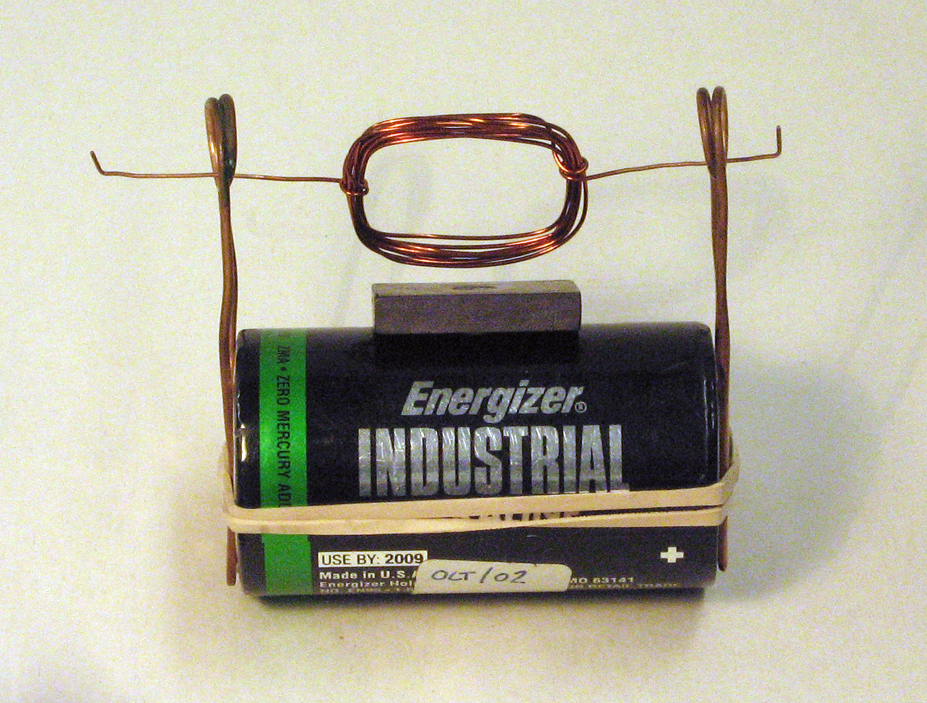

| Home | > | Demo Index | > | E&M Index |
Equipment: A motor made from a battery, a magnet, 2 paper clips a rubber band and some insulated copper wire that has been wound into a loop.
What it does: When assembled, the coil rotates freely above the magnet, demonstrating a simple motor.
Concepts Demonstrated: Torque on a current loop; the basic operation of a dc motor.
Classroom assembly:
Cautions: Disconnect the motor when not in use.
Setup Time: Short.
Difficulty: Straightforward.
Visibility: High. This demonstration can be shown on the overhead projector and is appropriate for large lecture halls.
Related demonstrations:
References:
Original Construction: The battery is a D cell. The magnet is a rubber fridge magnet, magnetized perpendicular to the magnet.
The paper clips were straightened and wound around a pencil to from a 1 turn circular loop with two arms of equal length. Note: any stiff uninsulated wire can be used in place of the paper clips. The insulated copper wire consists of about 6 turns of 24 gauge (or similar) wire wound into a square loop with two arms. In this setup, the wire was wound around a 9V battery to make an even and consistent square loop. Once the square loop was formed, the insulation was removed from the top half of the arms of the loop. Note: If all the insulation is removed, the motor should not work in theory. However, in practice, it can rotate in either direction as vibrations in the system will cause it to 'jump' to the next step in the motor rotation.| Home | > | Demo Index | > | E&M Index |